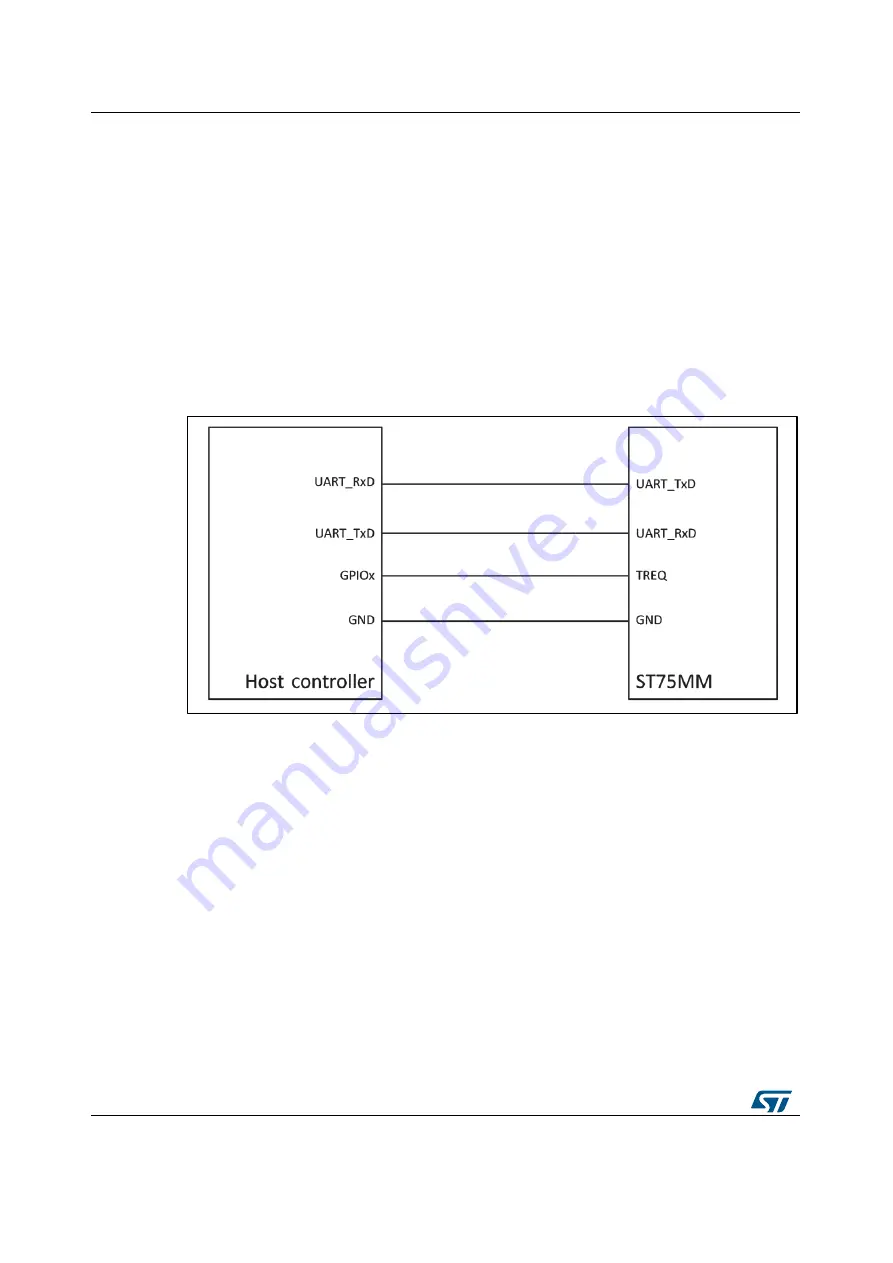
Host interface
UM2241
6/26
DocID030767 Rev 1
1
Host interface
1.1
Settings
The host interface is used to interface the ST75MM to the host controller, it allows
exchanging data, configuration and control messages.
The host interface can be managed by the host controller with a half-duplex asynchronous
serial port (UART) plus an additional synchronization signal which will be referenced, in this
document as
TREQ
.
The configuration at the host controller shall be the following one:
2-wire UART port set to (57600, 1, N, 1) no flow control
Single wire push-pull output (TREQ line)
Figure 1: Host controller to ST75MM connection scheme
1.2
Operations
Being the communication link between the host controller and the ST75MM a half-duplex
serial link, the communication paradigm is master/slave, where the ST75MM acts as the
master of the communication.
When an event is triggered inside the ST75MM (incoming PLC frame, completion of
requested activities or error/warning events), this is automatically and immediately sent to
the host controller through the serial link. This means that the host controller should
continuously monitor the UART port, decode the frames as they are detected and send an
acknowledge message to the ST75MM.
When the host controller needs to send a command to the ST75MM (data request or MIB
programming/reading) it shall drive low the TREQ signal (which indeed needs to remain
high when idle) and wait for the ST75MM to send a special message, the so called "Status
Message" (SM). As the SM holds information about the availability of the ST75MM to
receive commands, it shall be detected by the host controller before sending the message
request to the ST75MM. The ST75MM will respond immediately to the host controller with
an acknowledge byte and, if the command requires a further communication (e.g., the
result of the command) will be sent as an internally triggered event (see previous
paragraph) once the operations inside the ST75MM are concluded.





















